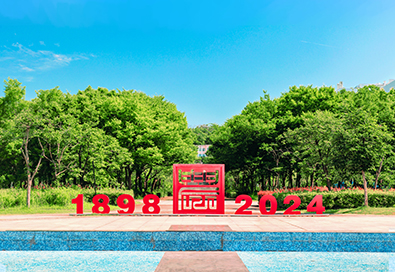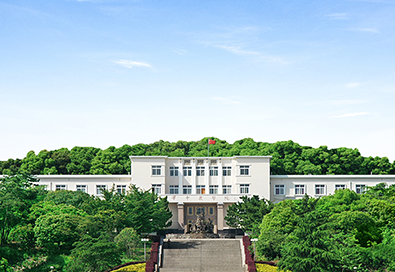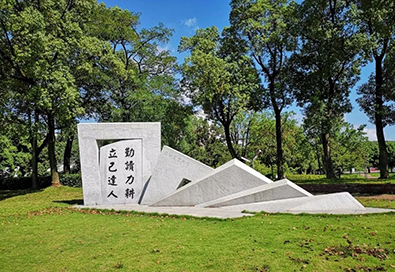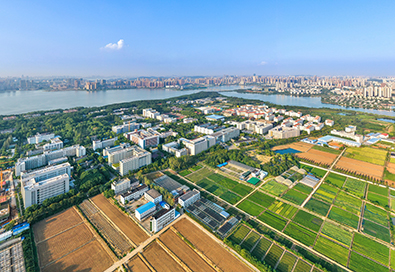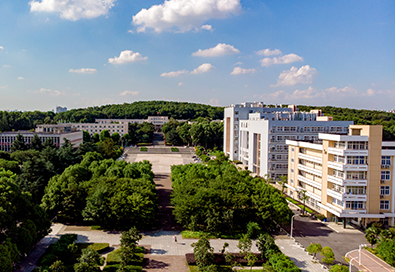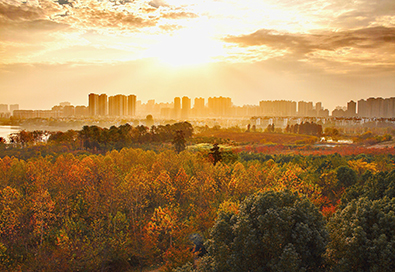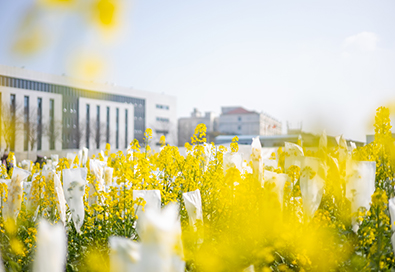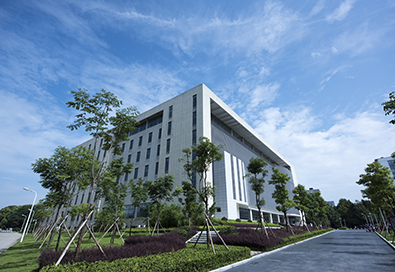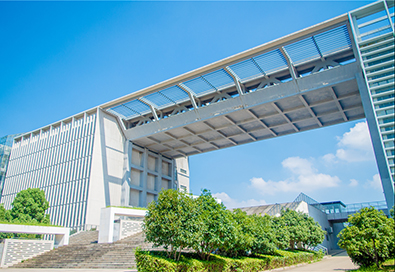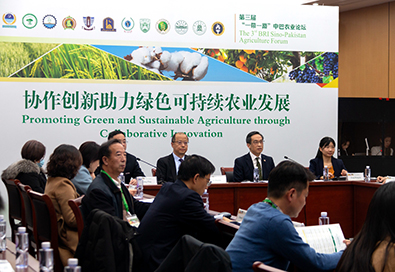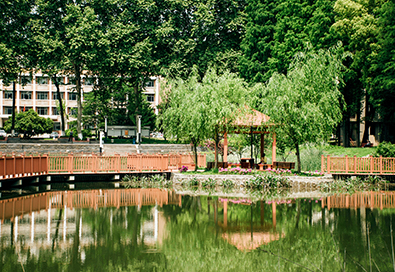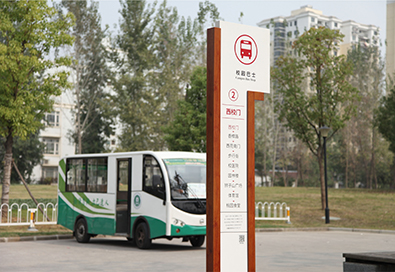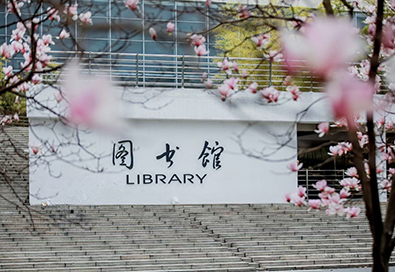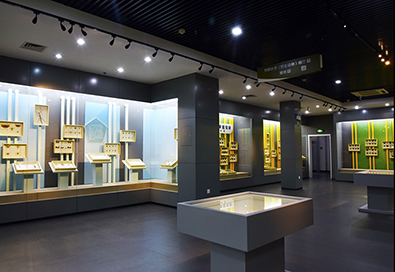On May 11, the yield measurement of micro-ridge cultivation technique for direct-seeded rapeseed was held at Jingzhou city, Hubei province, organized by Huazhong Agricultural University (HZAU), Jinzhou Academy of Agricultural Sciences, and Jiangling Prefectural Bureau of Agriculture and Rural Affairs.
The event was attended by over 30 participants from the National Agro-Tech Extension and Service Center (NATESC), Department of Agriculture and Rural Affairs of Hubei province, Hubei Rapeseed Office, National System of Rapeseed Industry Technology, Oil Crops Research Institute of Chinese Academy of Agricultural Sciences, Jiangxi Agro-Tech Extension Center, Jingzhou Municipal Bureau of Agriculture and Rural Affairs, Jinzhou Academy of Agricultural Sciences, as well as the College of Plant Sciences & Technology and the College of Engineering of HZAU.
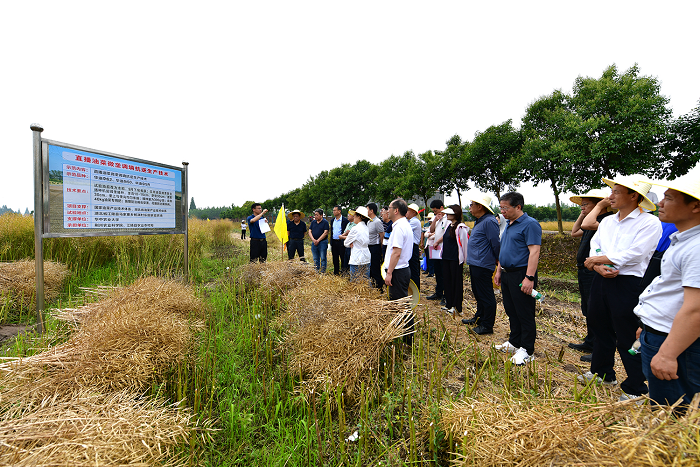
Prof. Wang Bo introduces the demonstration base and key techniques [Photo/Liu Tao]
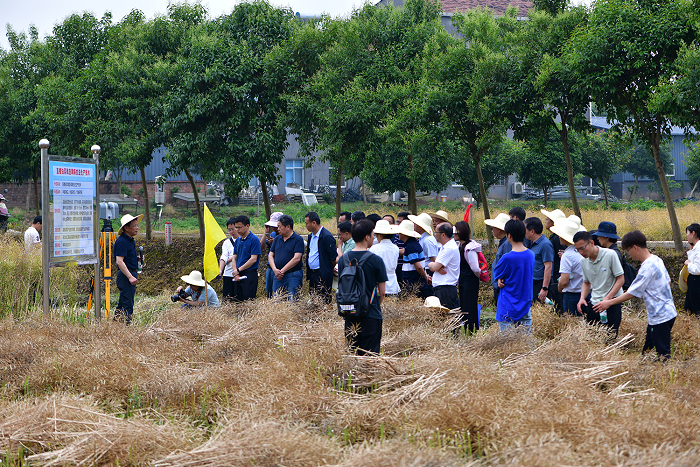
Prof. Liao Qingxi introduces key techniques of combined seeder for micro-ridge technique [Photo/Liu Tao]
According to Wang Bo (professor of the College of Plant Sciences & Technology) and Prof. Liao Qingxi (dean of the College of Engineering), the demonstration base covers 100 mu (1 mu= 0.0667 hectares), and before the rapeseed sown on October 16, 2023, rice was planted here. The rapeseed varieties were "HYZ 62", "HYZ 50", and "HYZ 5R" developed by Rapeseed Genetic Improvement and Innovation Team at HZAU. They further introduced the key points of this cultivation technique: utilize combined seeder for micro-ridge technique to complete straw returning, land preparation, ditching and ridging, fertilization and sowing; the bed is 1.8 m in width with micro-ridges on it; the ridge is 10-15 cm in height and its spacing is 30 cm; seeds should be sown in row uniformly on both ridges and furrows. The seeding amount is 300g per mu; each mu is base-fertilized with 40 kg rapeseed-specific fertilizer, topdressing by 10 kg urea as winter fertilizer; dimenthachlon and potassium dihydrogen phosphate are sprayed by drones during the early flowering stage; defoliants are sprayed 3 days before harvest, and the mechanical harvesting is done in a single pass.

Experts conduct on-site yield measurement [Photo/Liu Tao]

Experts conducts on site weight measurement [Photo/Liu Tao]
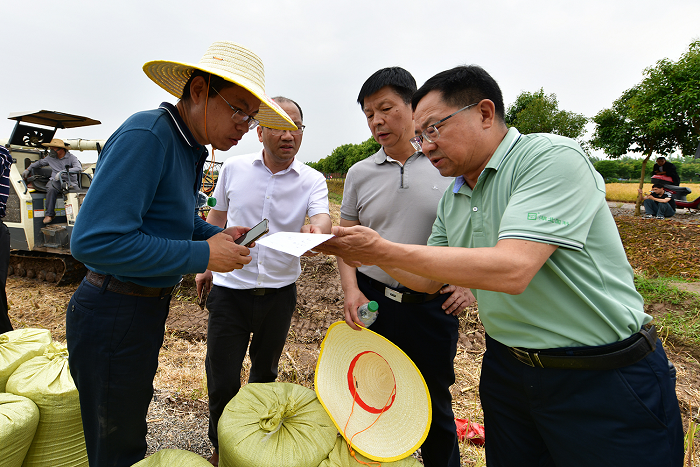
Experts check the data [Photo/Liu Tao]
On the same day, the rapeseed was reaped by combine harvesters, followed by the measurement of its moisture and impurity and calculation of its actual yield. Among the 4.91 mu harvested fields, the wet weight of mechanical-reaped rapeseed reached 885.9 kg; impurity content amounted to 1.83%; moisture content was 15.87%. Based on the standard moisture level of 11%, the actual production stood at 167.92 kg per mu.
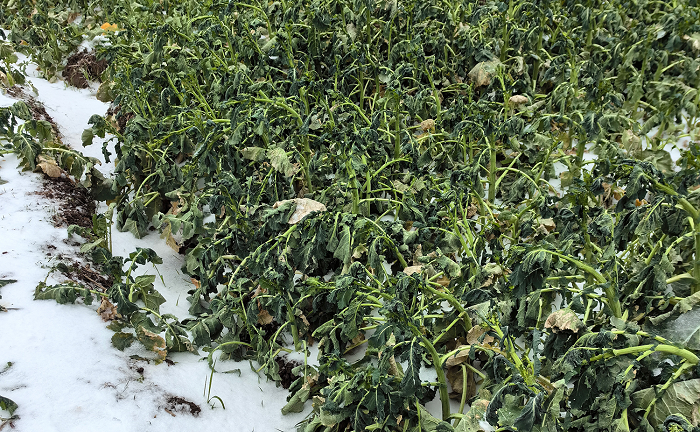
Jiangling test site was hit hard by frost in early 2024 [Photo/Wang Bo]
Prof. Zhou Guangsheng of the College of Plant Sciences & Technology stated that a good match of high-quality varieties and fine cultivation techniques, fully mechanized production, and further improvement of yield per unit and planting efficiency are important means of increasing China's total rapeseed yield and bolstering the international competitiveness of rapeseed industry. In recent years, China has experienced frequent extreme weather, with an unstable climate during rapeseed sowing period and frequent disastrous weather during rapeseed growth period. In 2024 alone, there were two instances of frost disasters, with Jiangling test site as one of the hardest hit areas. Despite these adverse factors, the actual rapeseed yield reached 167.92 kilograms per mu, which proved that the selection of rapeseed varieties with high resistance and the implementation of cultivation techniques that prioritize resilience and stable yields can effectively mitigate the adverse impacts of disastrous weather.
According to the expert group led by Wang Jijun, chief agronomist of the NATESC, the micro-ridge cultivation technique for direct-seeded rapeseed to improve stress resistance and yield stability has its great significance. It adopts the micro-ridge planting mode, where seeds are sown simultaneously on ridges and furrows after rice straw returning, thus enhancing the soil moisture regulation capacity. This effectively alleviates the problems of low seedling emergence rate and poor seedling quality in rapeseed planting areas with varying rainfall amounts, hence realizing the full seedling emergence of all sown seeds. As a result, the quality of rapeseed seedlings is improved, rapeseed with both high yield and lodging resistance ability is able to be harvested, and the resilience as well as the yields stability of rapeseed is promoted.
Source: http://news.hzau.edu.cn/2024/0512/69695.shtml
Translated by: Zhu Kaiyue
Proofread by: Sun Ying
Supervised by: Xie Lujie

